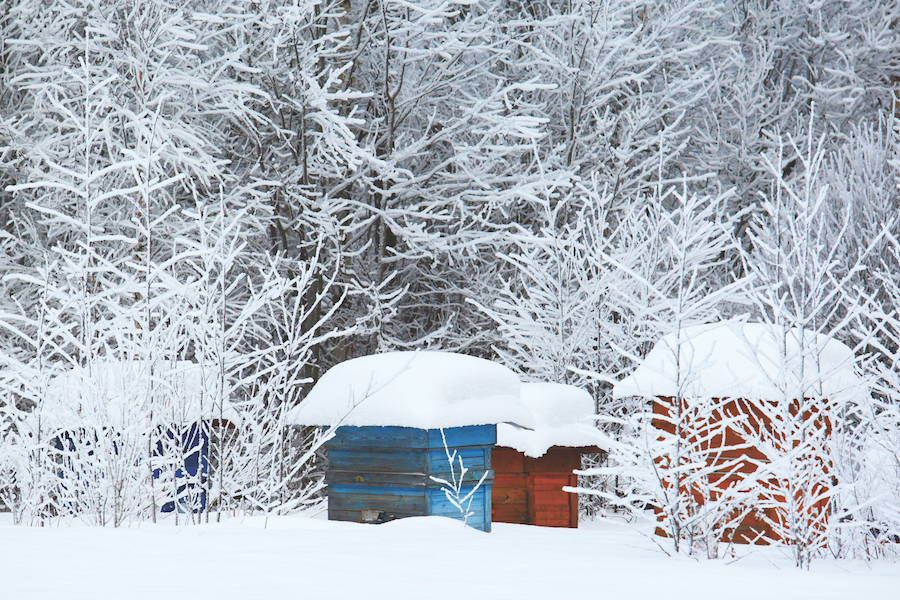WELLFLEET — On this farm we have Wellfleetian honey bees — although not really; their origins are more likely Ukrainian.
Honey bees were never native to North America. With the breakup of the supercontinent Pangaea 200 million years ago, our continent drifted apart from Eurasia and Africa before honey bees evolved. Early honey bees were then apparently too late to cross the widening Atlantic Ocean. They didn’t reach these shores until they were carried here in the holds of the sailing ships of European settlers, arriving in Virginia and New England in the 1600s.

We think our bees have Ukrainian or at least eastern or northern European origins because they are dark. Bees with yellow abdomens, the kind more commonly kept in apiaries, evolved around the sunny Mediterranean and are labelled “Italian.”
As one might expect, geographic differences in bee color are not accidental, but confer advantages specific to the local environment. Dark bees absorb more radiant heat and can therefore fly at lower ambient air temperatures.
A bee scientist once refrigerated both dark- and light-colored bees until they were barely mobile, placed them on a sunny windowsill, stood back and watched. The dark bees, absorbing more light, warmed up faster and flew off first. Indeed, the native “black bee” of the British Isles is famous among bee enthusiasts for boldly going forth to collect pollen and nectar in cool gloomy weather, while yellow bees will stay inside and catch up on housework.
These dark honey bees of north Wellfleet not only look different from their southern European relations but also have a somewhat different lifestyle as a consequence of thousands of years of natural selection for survival in a land with fiercely cold winters. Dark bees are more serious about family planning, paying more attention to floral income and colony expenses: queens lay eggs prolifically when pollen and nectar are seasonally abundant, but shut down brood rearing during nectar dearths.
An extreme expression of this behavior occurs in late fall. Our honey bees winter over as a small cluster of adult workers, plus the queen, that consumes much less stored honey than colonies of their more extravagant southern-evolved relatives. Then in early spring those small colonies of dark bees are first to exploit the Outer Cape’s rich pollens of hazel, willow, and maple. The queens’ egg-laying accelerates then, and colonies grow explosively.
But now it’s December, not yet the solstice, and activity in the bee yard, and in the hives, is at a low ebb. Most queens have stopped egg-laying completely. They will resume soon after the winter solstice and, somewhat surprisingly, well before most native plants break dormancy and bloom.
The rapid ramping up of late winter and early spring brood rearing is a critical strategy of northern-evolved honey bees, as they race to build a populous workforce in time for the year’s strongest nectar flows, which happen April through early July.
Without this innate planning, buildup, and consequently abundant harvest, it would not be possible for this tropically evolved colonial insect to survive winter on a wind-swept peninsula on the edge of a continent not originally its own.



